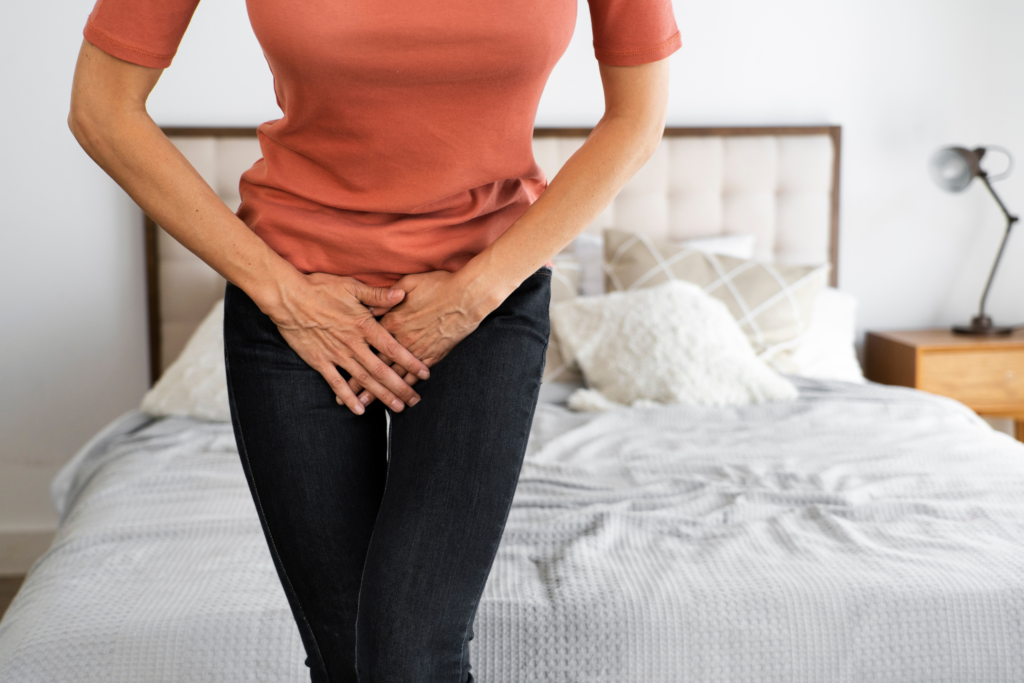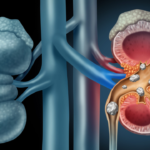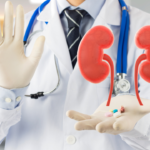
Millions of individuals across the world suffer from a medical ailment known as overactive bladder (OAB). It might be difficult to suppress the sudden, frequent need to urinate that characterizes it. Incontinence, shame, and a lower quality of life can result from this. While there are several medicinal options for OAB, altering one’s way of life can also assist manage symptoms and enhance bladder control. We’ll talk about some practical lifestyle modifications for OAB in this blog, such as nutrition, exercise, and bladder training.
Changes to the diet for an overactive bladder:
Changing your diet might help you control the symptoms of OAB. Certain meals and beverages might aggravate OAB symptoms by irritating the bladder. These consist of:
- Caffeine: Caffeine is a diuretic that stimulates the bladder and can increase urine output. It can be found in various sodas, coffee, tea, and chocolate. Caffeine consumption can be decreased or eliminated to aid with bladder control.
- Alcohol: Similar to caffeine, alcohol is a diuretic that can cause the bladder to become irritated and produce more pee. Reducing alcohol intake or abstaining altogether might ease OAB symptoms.
- Foods that are spicy: Foods that are spicy can aggravate the bladder and raise the risk of urgency and incontinence. OAB symptoms can be controlled by avoiding or reducing the consumption of spicy foods.
- Artificial Sweeteners: Artificial sweeteners that irritate the bladder and exacerbate OAB symptoms include aspartame and saccharin. Artificial sweeteners should be avoided or consumed in moderation to enhance bladder control.
On the other hand, some meals and beverages can assist in enhancing bladder control and easing OAB symptoms. These consist of:
- Water: It’s crucial for bladder health to stay hydrated. The incidence of urinary tract infections (UTIs) and other bladder issues can be decreased by drinking enough water.
- Fiber: Consuming a diet high in fiber can aid in preventing constipation, which can put a strain on the bladder and exacerbate OAB symptoms.
- Vitamin D-Rich Foods: Research has indicated that vitamin D helps enhance bladder function and lessen OAB symptoms. Fatty fish, egg yolks, and fortified dairy products are foods high in vitamin D.
- Magnesium-rich foods can aid with bladder control and minimize bladder spasms since magnesium is a natural muscle relaxant. Nuts, whole grains, and leafy greens are foods high in magnesium.
Overactive Bladder Exercises:
Another useful strategy for treating OAB symptoms is exercise. The pelvic floor muscles, which support the bladder and urethra, can be strengthened with regular exercise. These muscles can be strengthened to aid with bladder control and lower the chance of incontinence. Here are some activities to aid with OAB symptom management:
Kegel exercises include tightening and loosening the muscles of the pelvic floor. This may aid in enhancing bladder control and lowering the chance of incontinence. To do a Kegel, tighten the muscles that control urination for 10 seconds, then let them rest for the next 10. Ten to fifteen times each, three times daily, repeat this workout.
Squats: Squats can strengthen the muscles in the pelvic floor and enhance bladder control. Standing with your feet shoulder-width apart, steadily lower your body into a sitting posture to complete a squat. Hold for a few while, then gently push yourself back up to standing. Ten to fifteen times each, three times daily, repeat this workout.
Yoga: Yoga can help with bladder control issues and lower incontinence risks. The bridge posture and the cat-cow stance are two yoga poses that can help strengthen the pelvic floor muscles and get better bladder control. Stress, which can exacerbate the symptoms of OAB, can be reduced with regular yoga practice.
Training the Bladder for an Overactive Bladder:
A behavioral therapy called bladder training gradually lengthens the intervals between urinations. By doing so, you can retrain your bladder to store more urine and have fewer cravings. To train your bladder, follow these steps:
- Start maintaining a bladder diary to keep tabs on your daily fluid consumption, toilet visits, and OAB symptoms. This might assist in finding trends and causes of your symptoms.
- Plan your urine on a timetable based on the information from your bladder diary. Start with a routine that permits you to urinate every two hours, and then progressively extend the interval by 15 minutes each week.
- Practice Kegel exercises to strengthen the pelvic floor muscles and enhance bladder control as you wait in between trips to the potty.
- Keep your cool: When you feel the desire to urinate, attempt to keep your cool and divert your attention with something you enjoy doing or deep breathing exercises. This can lengthen the interval between trips to the loo and lessen the strength of the need.
- Increase the time between urinating gradually: Add 15 minutes to the duration every week as you become used to larger gaps between trips to the loo.
It’s crucial to remember that it may take a few weeks after bladder training before you see a noticeable change. Before beginning bladder training, it’s also advisable to speak with a healthcare professional, especially if you have any underlying medical ailments or worries.
Finally, it’s critical to keep in mind that Overactive Bladder is a medical issue that can significantly lower a person’s quality of life. While dietary adjustments, regular exercise, and bladder training might help manage OAB symptoms, it’s still vital to speak with a healthcare professional for an accurate diagnosis and treatment choices.
Dr. Dhake, a physician with expertise in urology and urinary diseases, can create customized treatment programs depending on each patient’s needs and medical background. Treatment options for OAB may also include medication, nerve stimulation, or, in rare circumstances, surgery in addition to modifying one’s lifestyle.
When managing OAB symptoms, it’s crucial to put your overall health first and seek qualified medical guidance. People with OAB can significantly improve their quality of life and bladder control with the correct treatment strategy.
Conclusion:
Under the guidance of Dr. Dhake, renowned as the best urologist in Wakad, Pune, individuals coping with overactive bladder (OAB) find comprehensive support at Dr. Dhake Urology Clinic. Dr. Dhake’s personalized approach integrates lifestyle adjustments and, when needed, medical interventions, emphasizing a commitment to improving the quality of life for those affected by OAB. His compassionate understanding and holistic strategies, encompassing dietary changes, exercise, and bladder training, empower patients on their journey to better bladder control and overall well-being.




